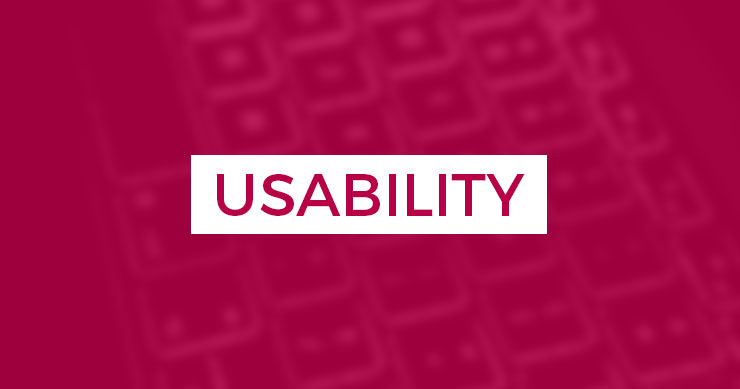 Hey! I’m hanging out at BlogWorld & New Media Expo in New York City, checking out sessions, chatting with cool folks and altogether running around like a little kid on Christmas. It’s pretty awesome. While I’m here I’ll be bringing you daily recaps to help you get the goods of what’s been going on, whose saying what, and why you should hop on a plane or train right now and come hang out with us.
Hey! I’m hanging out at BlogWorld & New Media Expo in New York City, checking out sessions, chatting with cool folks and altogether running around like a little kid on Christmas. It’s pretty awesome. While I’m here I’ll be bringing you daily recaps to help you get the goods of what’s been going on, whose saying what, and why you should hop on a plane or train right now and come hang out with us.
Now that Day 1 is officially behind us, here’s what you missed and a peak at how I spent my day.
Dominate your Niche with Social Media, SEO and Blogging
My morning kicked off with a presentation from my favorite Minnesotan, Lee Odden. Lee was around to offer the BlogWorld audience some tips on how to absolutely ROCK their niche by dominating social media, search engine optimization (SEO) and blogging. First, Lee clarified exactly what he meant by the term “dominating”. Basically, it means to earn authority by being everywhere. It means creating a presence in social, news, images, video, Web sites, local, real-time, blogs, mobile, etc. Of course, it’s not just about being present, it’s about being present with authority because its ubiquity and relevance that wins. You don’t just want to be everywhere. You want to be relevant. Otherwise you’re just a spammer.
When it comes to SEO, it’s the quantity of quality content, links and social engagement that matters. He encourages mixing creation with curation to help take away some of your content burden, which I think is a fantastic idea.
Lee gave 7 tips for total SERP domination
- Personas: Align business goals with customers’ needs and interests by creating personas to help you guide keyword research, content and link building. How do you build them? By collecting data! Ask your readers for information, host regular surveys, look at your Web analytics, see how people interact with your Web site, use social tools like PostRank to measure engagement. Once you have the data, create a profile for your target audiences, identifying keyword clusters and content types for that persona.
- Your Unique Selling Point: Your Unique Selling Point (USP) is what you have to offer that no one else does. To figure out what it is, ask yourself:
- What are your key benefits?
- What are customer pain points?
- Be specific and show proof
- Be concise
Once you identify your USP, LIVE IT!
- Keywords & Topics: What keywords are people using? What topics are they talking about? Use this information to create a keyword glossary that you can constantly reference. It will take some work to create but once you do, you’ll always have it.
- Content Plan: Have a plan for everything that you publish and set that into place before you ever start writing. Know what you’re going to publish, the title you’ll use, the main point of the post, the tags you’ll use, who will write it, where you’ll promote it, the media you’ll use, where you’ll repurpose it, etc.
- Optimization: Lee says anything that can be found through search can be optimized for better performance. Amen. Where to use keywords – post titles, categories, body copy, lists, anchor text links, tags, image alt text, etc. Social signals are great for SEO.
- Links: How you link within your old blog. Getting links for your important keywords
- Content Promotion: Lee says that 70 percent of your blog time should be on creating the content, leaving 30 percent of your time to the promotion of that content. Don’t be afraid to cross-promote through your other social accounts, but make sure it makes sense. Don’t autopost everything you say on Twitter to Facebook if that doesn’t make sense for your audience.
Awesome info, right? I KNOW!
Print & Mobile: Understanding QR Codes
Okay, so I won’t lie. I’m not as up-to-date on this whole QR code craze as I maybe should be. I don’t think I even knew how to scan one before I attended this session hosted by Jason Pinto and that’s exactly why I attended this session and I came away with some good information. Now I’m on my way to becoming a QR code ninja. Well, maybe. Someday.
First off, QR stands for “quick response”. For me, that’s a pretty important thing to keep in mind because it can help guide your use of them and how they may be useful for you. If you’re in a business where customers would benefit from being able to access information about your company in-the-moment and on-the-go then QR codes may make sense for your business. For example, if you’re a real estate agent, by putting a QR code on the bottom of that For Sale sign would allow interested parties to get additional information about a listing (a mobile tour, property details, etc) before they get distracted or forget about it. It would allow you to capture them right there. Those are the instances where QR codes start to make a lot of sense.
Jason also spoke a bit about how to customize your QR codes to give them a look and feel that works for your business, touching on the difference between simple vs complex codes. The more complex the code, the more information that’s being relayed. To make your QR codes clearer (read: simpler), Jason recommends always using a URL shortener. The shorter the URL, the less “mess” in the code. He spoke about some companies that put their logos in the middle of their QR code or that use colors other than black and white. If you’re going to play with the color and design, just make sure you’re keeping the contrast, because that’s what’s important. If you want to check out how they designed an awesome (Celtics-inspired) QR code, check out their post on , which is pretty cool.
Best Practices for Using QR Codes to Make Print Interactive
- Shorten the URL
- Cut down on the Egg Nog: Get rid of the fat. Mobilize your content and focus on that experience, getting rid of all those fancy Flash features. Know what people want when they land on your page and make those things prominent.
- Track, Measure & Test: Make a short URL that you’ll only publish via that QR code so it’s easier to track and measure. This will help you see how many people scanned it. You can break down what day people are scanning QR codes, the IP address, etc.
- Don’t Forget About Online Networking: Create a mobile-optimized site with your email, address, social links, etc, and then generate a QR code. Then put that code on your business card.
One last thing – when it comes to QR codes the biggest thing is often giving someone an incentive for wanting to learn more. Why should they grab their phone and scan your code? When it comes to this, Jason says not to underestimate the power of a simple coupon or discount code to get them to take that action. Personally, I look at it a bit like getting users to sign up to your Facebook page. If you want them to take that extra step, you need to provide some sort of reward they can’t get any other way from your brand.
Thanks to Jason for a kick butt presentation. I learned things I didn’t even know I was doing wrong.
Facebook Analytics: How to Know If You Reached Your Goals
After lunch, Chris Penn delivered a great session on Facebook Analytics, helping everyone to put sense (cents?) to those numbers we’ve all been gathering on Facebook. As Chris mentioned, when it comes to Facebook or anything else, if you don’t have a goal you’re measuring mileage on a road trip with no destination. You have to know what you’re measuring and what it means to your organization.
Once good point Chris made was the importance of separating all your Facebook activity. Facebook has PPC, it has brand pages, it has groups, it has site integration, etc. If you’re not keeping them separate with good tagging, all of your stuff flows together like a big mush. Then you don’t know what’s working because everything looks like it’s coming from FB and that’s not really useful. Like, at all. Separate it in your analytics.
What are some ways to track users on Facebook?
PPC Ad Manager: You can type anything into Facebook’s Ad Manager to see how many people are in that estimated audience. If you’re looking for television interests, underwear size, etc, put it in and Facebook will tell you how many people identify with that.
Facebook Insights: Insights for Pages will tell you how many people are interacting with your pages, what they’ve done, etc. You can get real demographic information about the people who like your page and it’s super reliable because it’s using real Facebook data.
Insights for Web sites: This is Facebook’s newest offering, only available since April. It basically shows you your social feedback loop. You register your Web site with Facebook by putting a little Meta tag in the header of your site and it will tell you who came from your Web site to Facebook and how influential your content is. Anyone else a little worried by the “register your site with Facebook wording”? Things are sounding a bit too Googley.
Tracking users OFF Facebook:
Google’s URL Builder: Get in the habit of using this any time you’re sharing content you care about on Facebook. You can specify the campaign source and then you can put that in FB. Every time it’s passed around it will be correctly attributed to that campaign.
Google Analytics: Set things up so you’re using GA variables to track referral strings for CRMs to see exactly what paid ads are working for you. Create different ads for Facebook that you do for Google because people aren’t looking for “what” on Facebook, they’re looking for “who”.
Another thing Chris mentioned was the importance of tracking earnings per lead to figure out how profitable your time on Facebook really is and if you should be doing something different. By using correct tagging, you can get a dollar value per visitor. The equation to remember?
Earn – Spent/Spent = ROI
That’s the only financial measure of ROI. Got it?
And that’s it for Day 1. Go grab a beer. I’ll see you back here tomorrow afternoon.


